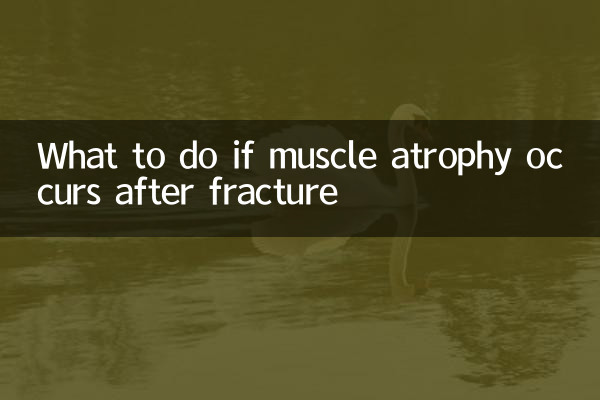What should I do if my muscles atrophy after a fracture? Scientific Guide to Rehabilitation
Muscle atrophy is a common complication after fracture. Due to long-term immobilization or reduced activity, muscles will atrophy, lose strength and other problems. This article will combine hot topics and medical advice from the entire Internet in the past 10 days to provide you with structured solutions.
1. Causes of muscle atrophy

Muscle atrophy after fracture is mainly related to the following factors:
| reason | illustrate |
|---|---|
| Braking time is too long | Plaster immobilization or bed rest resulting in long-term muscle inactivity |
| neuroinhibition | Fracture pain reflexively inhibits muscle contraction |
| reduced blood circulation | Reduced activity leading to insufficient local blood supply |
2. Division of recovery stages
| stage | time | Rehabilitation Focus |
|---|---|---|
| acute phase | 0-2 weeks | Control swelling, isometric training |
| healing period | 2-6 weeks | progressive resistance training |
| functional recovery period | 6 weeks later | Weight training, coordination exercises |
3. Specific rehabilitation plan
1.physical therapy
• Electrical stimulation therapy: stimulates muscle contraction through low-frequency current
• Hot/cold compress: improve local blood circulation
• Ultrasound therapy: promotes tissue repair
2.Sports rehabilitation
| training type | Specific methods | frequency |
|---|---|---|
| Isometric contraction | Tight muscles do not produce joint movement | 3-5 groups per day |
| Isotonic training | Use resistance bands to progress resistance | Once every other day |
| water training | Use the buoyancy of water to reduce weight | 2-3 times a week |
3.nutritional support
• Protein intake: 1.2-1.5g/kg body weight per day
• Supplement vitamin D and calcium
• Increase antioxidant intake (vitamins C/E)
4. Precautions
1. Rehabilitation training must be carried out under the guidance of a doctor
2. Avoid secondary injuries caused by premature weight bearing
3. The pain level is controlled within the tolerable range (VAS≤3)
4. Regularly review X-rays to confirm fracture healing
5. The latest rehabilitation technology
According to recent medical hot spots, the following new technologies deserve attention:
• Virtual reality rehabilitation training system
• Robot-assisted rehabilitation equipment
• Biofeedback training techniques
Conclusion:Muscle atrophy after fracture requires a systematic rehabilitation program. It is recommended to gradually restore muscle function under the guidance of professional rehabilitation physicians, combined with physical therapy, exercise training and nutritional support. Research shows that standard rehabilitation training can restore more than 85% of muscle volume.

check the details

check the details